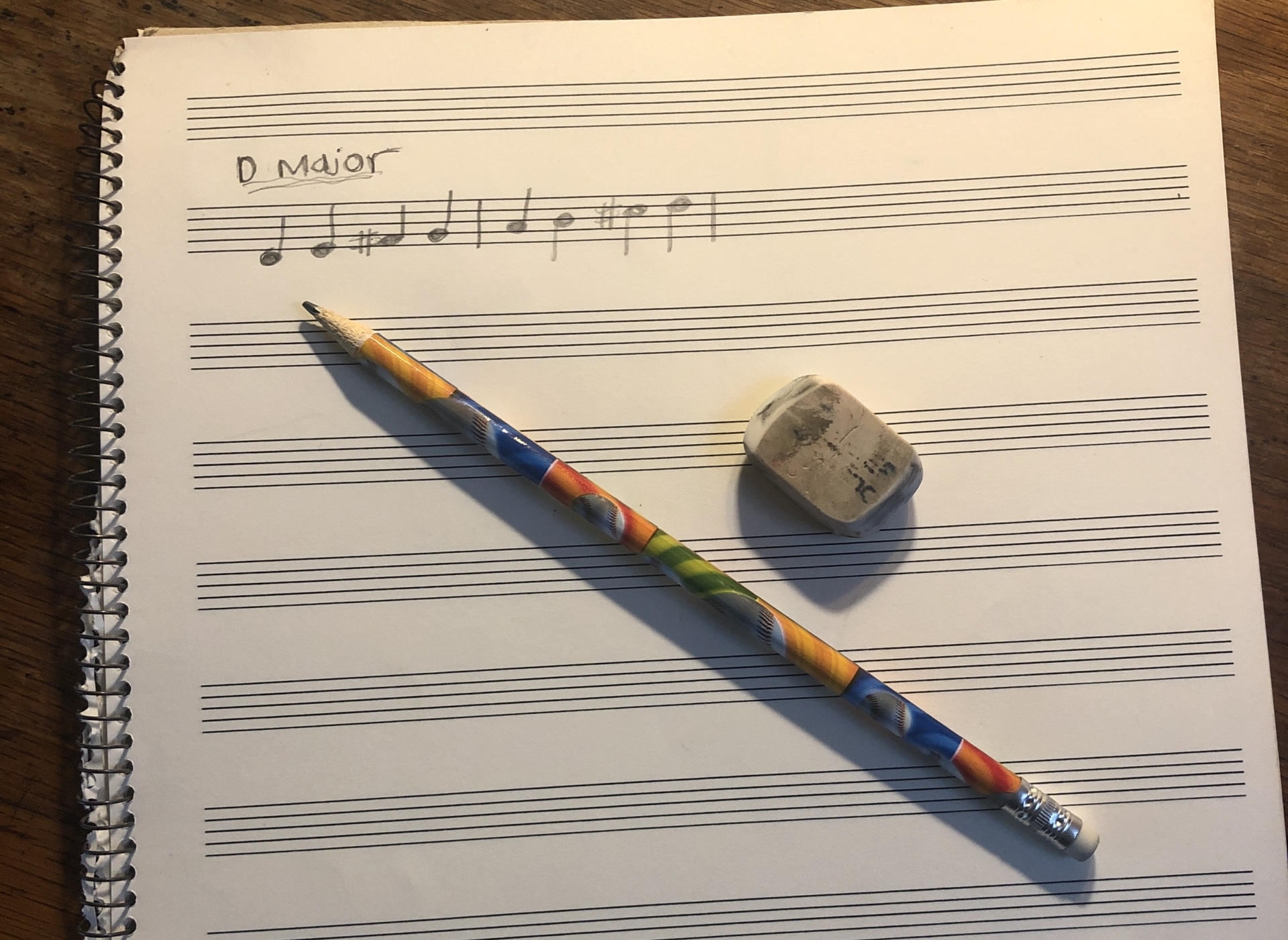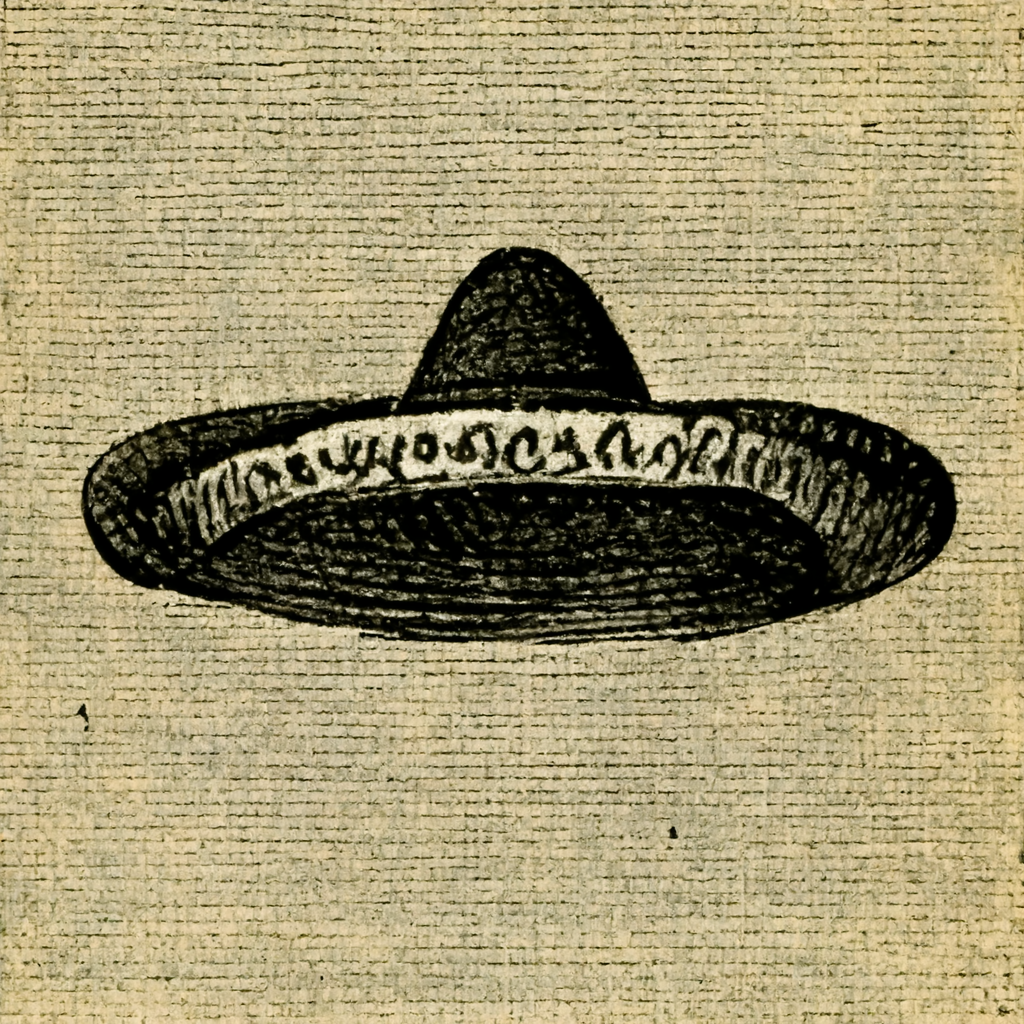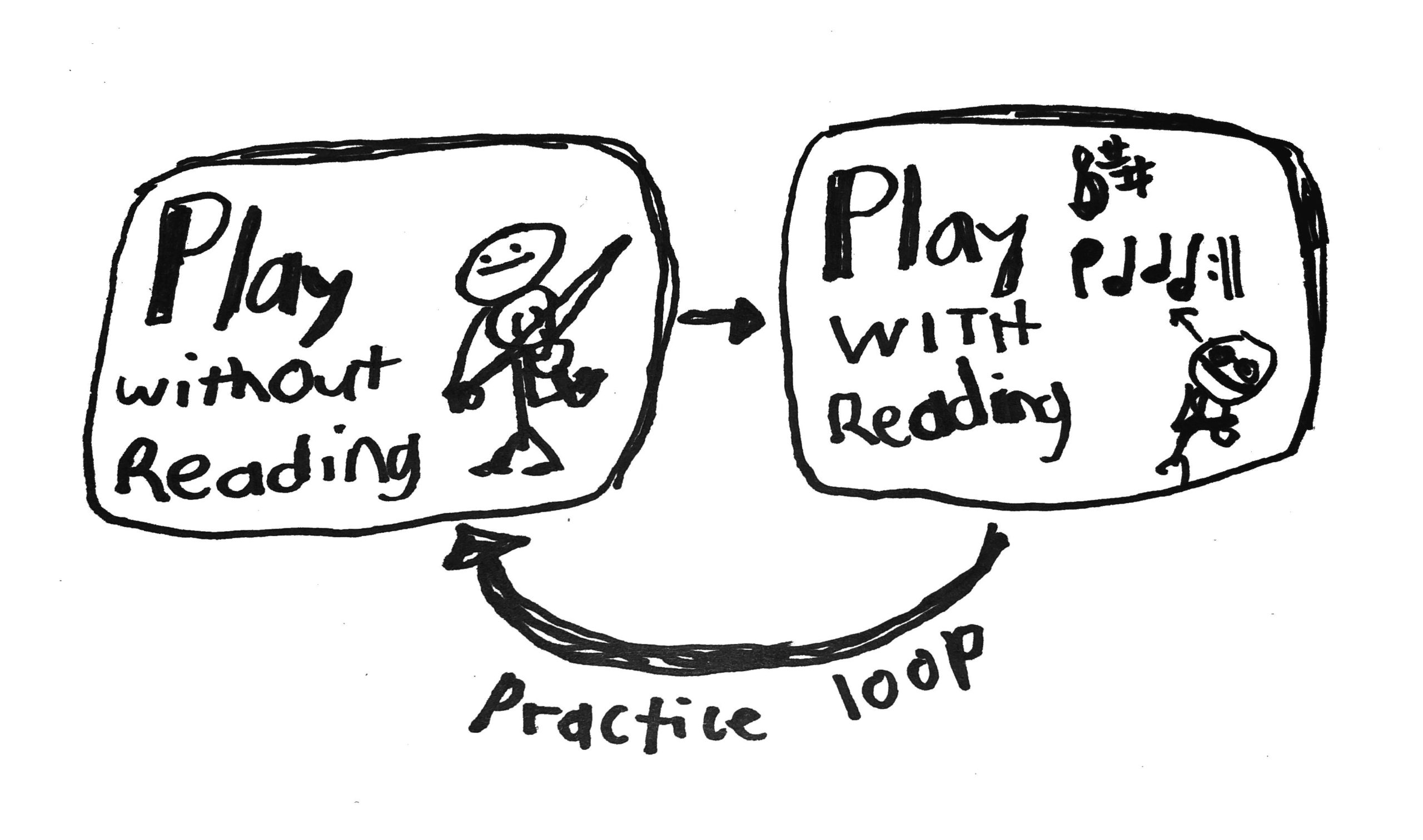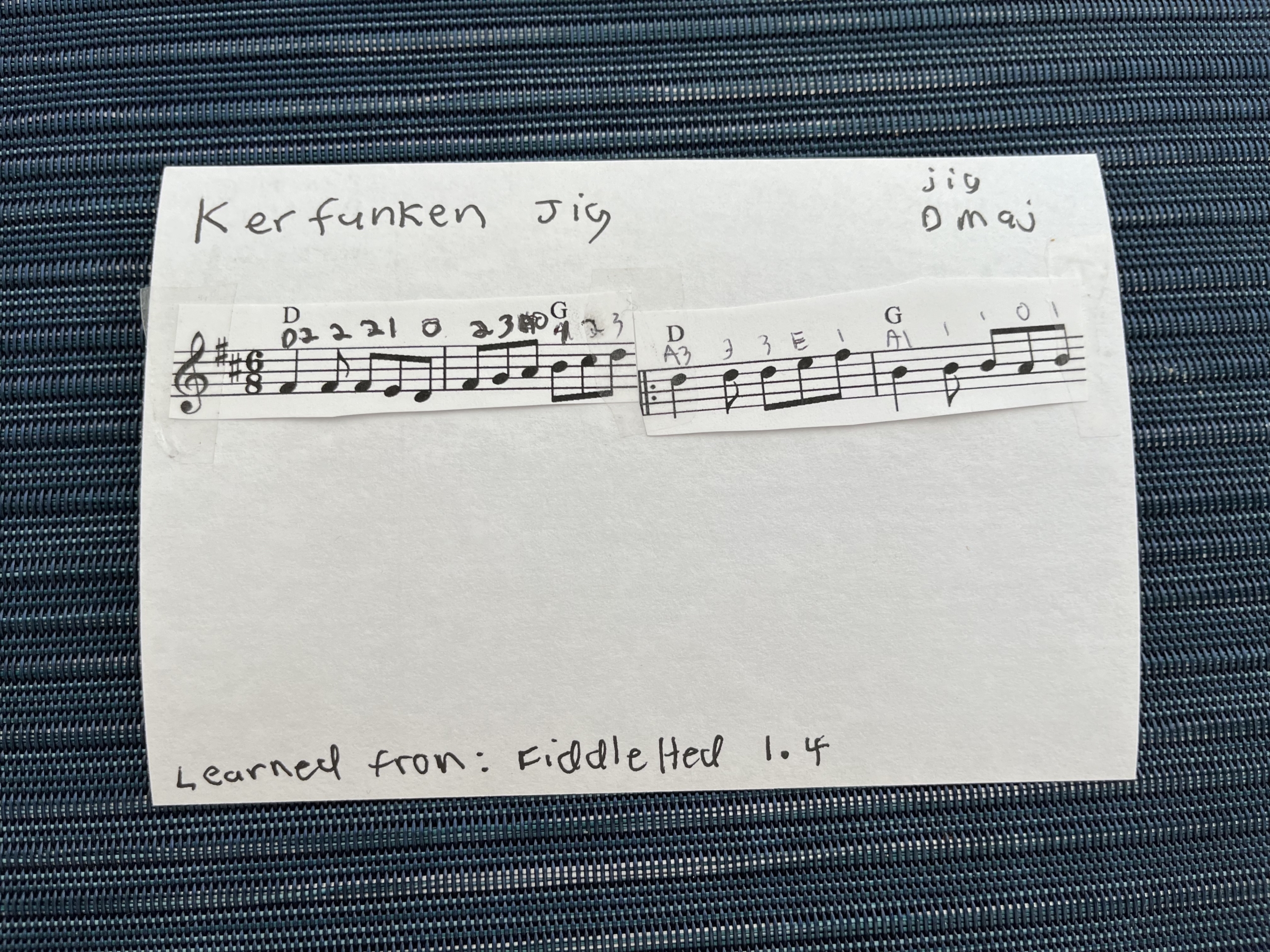The Write Way to Learn Note-Reading

One you’ve started to read sheet music, you can further develop the skill further by writing the notes yourself.
It may seem tedious, but if you write it down, your ability to read will improve. Here’s the big trick: start with simple tunes you already know how to play.
In addition to help you learn tunes, it will help you to remember them ☝️.
Steps
Learn and memorize a piece of music. You’ll more easily be able to read if you can play something. Once you can clearly hear the melody, it becomes easier to translate into music notation.
It’s like learning a language. You’re more likely to remember the word “sombrero” if I show you this:

…than if I say, “sombrero means hat in English.” The brain instantly makes the connection between the word and the image in the same way that it connects the sound of a phrase with the sheet music when you listen to it.

Read while playing. This is the Intuitive Note-Reading Process. Alternate between playing and playing while reading. This naturally trains the brain to read sheet music.

Read while singing, humming or audiating the melody. This further deepens your ability to read the notes.
Write the notes. Using a pencil, try to write the first bar or quarter (2 bars). If this is your first time writing music, you may want to have the original sheet music visible as you re-write it.
But once you’ve gotten your feet wet, try to notate a tune without looking at the original sheet music. Then play and read what you just wrote. If it seems to make sense, then check your work against the original.
Remember to start with easy tunes. Also, start with small pieces. Practice writing just the first quarter of a tune, like Whiskey Before Breakfast.

This is yet another reason why the Learning Chunks system works. You can practice writing this one thing in the same way you practiced it when you first learned to play it.
Make any corrections with the pencil. Continue to work through the tune in small steps. The more you do it, the easier it will become.
Easy songs to start with
Here are some easy songs to start with. They are easier to read and write because there is lots of repetition.
Here are some tunes which are a little more challenging to play, but which has lots of repetition.
Project
Make a cheat sheet or flash cards for tunes you’ve learned.

Write out just the first 1-2 bars of each part along with the title. This will help you to remember the tune as well as improving your reading skills.
Further
If you want to go deeper with reading sheet music, then check the Note-Reading For Fiddlers course.
I walk students through the process in this workshop: Note-Reading Workshop: Kerfunken Jig.
Playing easy tunes is a good way to work on more challenging techniques.
Are you ready to begin your fiddle journey? Sign up for a free two-week trial and get full access to all courses and group lessons. Plus, I’ll send you some free lessons tailored to your current skill level.
Click here to become a FiddleHed!
Note-Reading For Fiddlers >>
